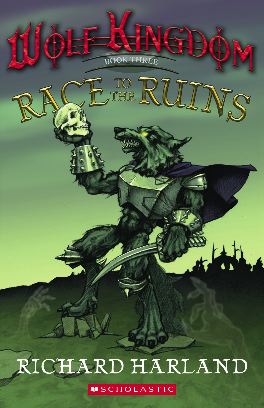3. Climax & After
The climax is where the story comes together. Various narrative strands and sub-stories show their mutual relevance and impact on one another.
Many of these convergences will have been planned when the novel was planned; others will emerge in the process of writing. When you’re letting sub-stories develop through the middle of the novel, it’s always a good idea to keep an eye open for potential connections.
My best example is my Wolf Kingdom books, a set of four short fantasies for kids. The overall story-arc tells how Tam and Nina join up with the Free Folk, an outlaw band that resists the tyranny of a Wolf-King who rules the land. A sub-story in Book 1 tells of a magic camouflage belt acquired by Tam. In Book 2, another sub-story tells of a magic metal-digesting bag acquired by Nina.
 Gradually, the magic objects idea became an ongoing strand: so, a magic dagger for Chiz in Book 3. As for Book 4, well, I’d always intended to wrap up the quartet with the overthrow of the wolf-army. I’d expected that the magic objects would play a helpful role in the fighting. Gradually, the magic objects idea became an ongoing strand: so, a magic dagger for Chiz in Book 3. As for Book 4, well, I’d always intended to wrap up the quartet with the overthrow of the wolf-army. I’d expected that the magic objects would play a helpful role in the fighting.
But, as I was writing Book 3, Race to the Ruins, I realised that a fourth magic object could play a far, far bigger role. The fourth magic object could be already in the possession of the Wolf-King, as the secret source of his power. So the overthrow of the wolf-army would depend on taking the magic object from him.
It was a connection I’d never expected, and it fitted in perfectly with what I’d already established about the wolves and their powers. Suddenly, the magic object sub-stories had a much more important reason for being there all along. From then on, I felt as if the story was truly looking after itself. It knew where it wanted to go, and I’d finally caught up with it!
Maybe that was a memorable case for me because I hadn’t been keeping my eye open and the realisation came so late. It confirmed what I’ve always believed, that the story is there and it’s my job to unearth it.
When I think of plot, I think of something that the author has constructed and manipulated; when I thing of story in a positive sense—and it always has a positive sense with me—I think of something that has its own shape and necessities. The author is simply its midwife!
|





